The use of a specific symbol, a horizontal bar, for the common ground, is intended to communicate that these are indeed all one node, which means are all connected by wire.
It doesn't communicate whether there's a link between all the PSU grounds, and a link between all the audio grounds, and then these are linked. It leaves the topology completely undefined. It could be a star ground, a single long serpentine wire, whatever.
You may well find there's an audible difference for how the ground connection is actually routed. You may find that current pulses in the power supply section induce voltages in the audio section for one ground topology and not for another. This is not controlled by the diagram, but left up to the knowledge of the wireman. There may be some text to accompany the diagram which clarifies this.
You are right to ask these questions.
